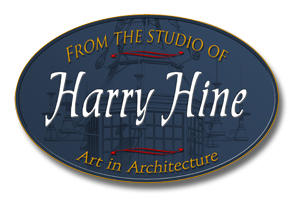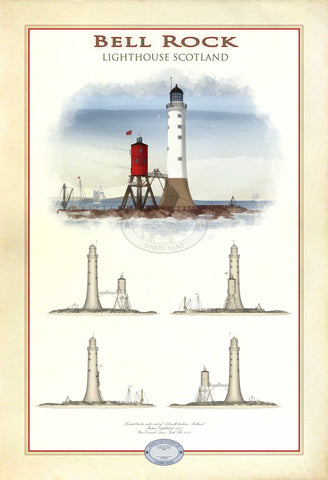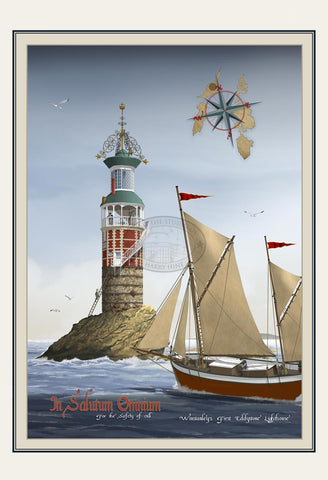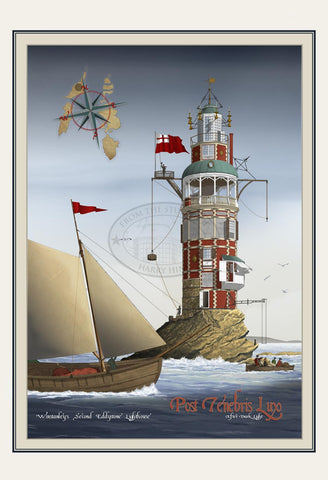Giclee print on fine art paper
Signed open Edition print
12 miles off the eastern coast of Dundee, Scotland lays the deadly reef of Inchcape. The top of the reef is visible only at low tide and at high tide can be submerged by 16 feet of water, presenting an extremely challenging navigational hazard to the busy shipping lanes for vessels leaving and heading for the Firth of Tay and Forth.
Legend has it that some 500 years ago, the Abbot of Aberbrothock, had a bell mounted on a small boat anchored just off the Inchcape reef. The constant rocking of the waves would sound the bell and warn unwary mariners of the dangers that lay beneath. The legend goes on to tell that pirates stole the bell, presumable having lost out on the rich pickings from damaged and wrecked ships on the reef.
Robert Stevenson championed the idea of building a lighthouse on the Inchcape reef and designed a structure that would withstand the worst storms the notorious North Sea could throw at it for over 200 years. After many years of setbacks Stevenson was finally given the go ahead to start work on digging the foundations of the tall conical tower in 1807.
Progress was slow and treacherous. The foundation could only be worked on during low tide. Stevenson and his work crews lived on board a ship anchored some distance off the reef and made their way to the work site in small rowing boats. At one stage of this early excavation, one their boats slipped its mooring and drifted unnoticed out to sea. Its absence was only discovered once it was time to retreat from the rock as the tide began to wash waves over the tops of the rocks. As there were more men on the reef than space on the one remaining boat the situation looked dire. Those who couldn’t climb in the small rowing boat had to hang submerged in the freezing sea and hold onto the sides of the little craft. Fortunately a supply boat heading towards their larger ship noticed the dire situation and was able to get close enough to pluck them from the sea.
Because of this incident and the great loss of time getting to the rock and back off again Stevenson designed a temporary, but robust wooden structure which would be fixed to the reef and provide living quarters for the crew. He also designed a small work platform for the blacksmith and stone masons. Eventually a wooden bridge connected the living quarters to the front door of the lighthouse.
In February 1811, the beacon was lit and shone a welcome light across the Inchcape reef and out onto the stormy waters of the North Sea. The tower which is of stone quarried from near Dundee and Rubislaw, is 115 feet in height and 42 feet in diameter at the base, tapering to 15 feet in diameter at the top. It is of solid dovetailed masonry for the first 30 feet, half of which is below high water and above are 5 rooms and the light room.
The original optical system used at the Bell Rock consisted of twenty four parabolic reflectors each lit in their center by an argand lamp. The reflectors were arranged in a rectangle with seven lamps located on each of the two long sides. Ten reflectors were mounted on the two shot sides and were fitted with red glass discs. As the optical system revolved a distinctive character of alternating red and white light was seen. This was the first revolving light in Scotland.
The Bell Rock Lighthouse was automated in 1988 and is now remotely monitored from Edinburgh, Scotland.
For much more information on the history of Bell Rock please visit www.bellrock.org.uk.
There is also a great National Geographic documentary to be found on YouTube about the building of the Bell Rock Lighthouse. http://www.youtube.com/watch?v=1kG3D1tjgqY . It’s well worth watching.







